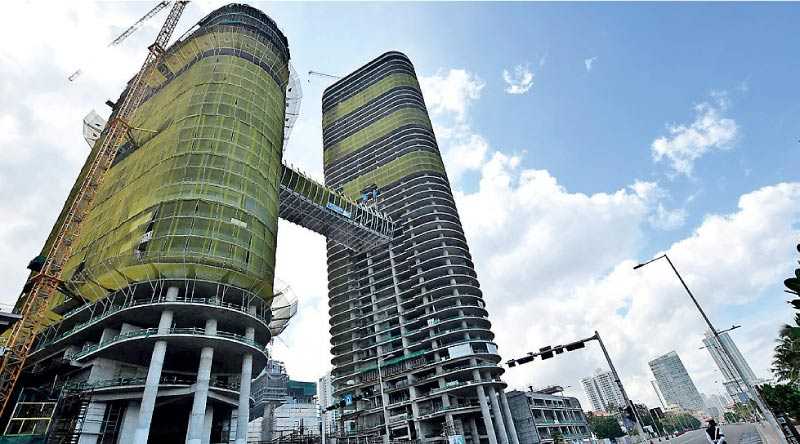Monday Feb 24, 2025
Monday Feb 24, 2025
Wednesday, 14 October 2020 00:44 - - {{hitsCtrl.values.hits}}

Economic activities have come to a standstill, despite interest rates being low
By a Special Correspondent
An economy can get stagnated due to several reasons. The main intention is to discuss the current situation in Sri Lankan economy. Economic activities have come to a standstill, even when interest rates are at lowest ever that we have seen during our lifetime. Credit is available to borrowers at very low interest rates. How can money be pumped to the economy to lubricate the stand-still economy?
A good indicator is credit to the private sector. During the past several months, this has been on the decline, while the market liquidity gets piling up in the banking system. Especially the money goes to the grass root level of the economy with retail credit. With the existing import rationalisation, the risk of currency devaluation and risk of money going out from the country are controlled.
Banks have to ensure repayment of loans by their borrowers. A prudent banker/credit officer is supposed to look at the repayment capacity of the borrower prior to the security offered by the borrower. Sri Lanka as a country with a matured population and average population ageing, coupled with other demographics, the majority of the population commits their disposable income on their existing debt repayments. We see good paymasters have less further repayment capacity.
Today, we see very few bankers or credit officers thinking on these lines. Bankers are busy with all compliance requirements and all internal controls, thereby they don’t have to think about credit growth or credit evaluation. A very low number of credit officers take time to structure a credit facility according to the customers’ cash flow requirements. Instead, the banks offer tailor made credit packages.
No State bank is willing to restructure their retail customers’ mortgage facilities, even if the customer commits to take additional credit facilities. The best advice they give is to go to another bank and get a fresh loan with additional loan while absorbing the existing loan with the State bank. In this process, the borrower has to go through the tedious process of executing a fresh mortgage while getting all local government documents, paying all levies, stamp duties, early settlement penalties, etc. Sad to say, this is contemporary banking in Sri Lanka.
I’m sure the fall in market interest rates and reduction of deposits by banks have enabled the banks to bring down their cost of funds and restructuring of selected existing credit facilities will not harm their net interest margins. To be fair by the banks, it is also important to see if restructuring of existing credit facilities at new low interest rates will bring down their NIMs. In an interest rate downturn, there is a component of banks’ fund base that doesn’t get down-priced such as the zero cost funds like capital, current account base, fixed rate debt instruments, etc.
However, reduction of rates in overnight funds such as savings base will give the banks a huge cushion to reduce lending rates. It is also important to note that duration of more than 70% of banks’ deposit base is less than 10 months. This means banks get their fixed deposit base repriced at lower interest rates very soon.
As a solution to pump liquidity via improving credit to private sector, bankers and credit officers can re-structure existing facilities of the of the good pay masters and offer fresh credit facilities, whose exiting facilities are nearing completion. For an example, a 40-year person whose existing credit facilities have been serviced more than 50% can extend his/her repayment by another 10 to 15 years and enhance the repayment capacity. Either that person gets disposable income, which will either help to lubricate the stagnant economy or will enable that person to get more credit without disturbing his/her exiting lifestyle. If necessary, I will give an example calculation, a very simple one.
Continuity of Buy Sri Lanka concepts will reduce the risk of unhealthy impacts of credit growth. Regulator’s role: Does the banks’ regulator has a mandate to support the fiscal policy of the country? Does the regulator has a moral objective to support economic growth of the country? This may be another good topic.
Discover Kapruka, the leading online shopping platform in Sri Lanka, where you can conveniently send Gifts and Flowers to your loved ones for any event including Valentine ’s Day. Explore a wide range of popular Shopping Categories on Kapruka, including Toys, Groceries, Electronics, Birthday Cakes, Fruits, Chocolates, Flower Bouquets, Clothing, Watches, Lingerie, Gift Sets and Jewellery. Also if you’re interested in selling with Kapruka, Partner Central by Kapruka is the best solution to start with. Moreover, through Kapruka Global Shop, you can also enjoy the convenience of purchasing products from renowned platforms like Amazon and eBay and have them delivered to Sri Lanka.
Discover Kapruka, the leading online shopping platform in Sri Lanka, where you can conveniently send Gifts and Flowers to your loved ones for any event including Valentine ’s Day. Explore a wide range of popular Shopping Categories on Kapruka, including Toys, Groceries, Electronics, Birthday Cakes, Fruits, Chocolates, Flower Bouquets, Clothing, Watches, Lingerie, Gift Sets and Jewellery. Also if you’re interested in selling with Kapruka, Partner Central by Kapruka is the best solution to start with. Moreover, through Kapruka Global Shop, you can also enjoy the convenience of purchasing products from renowned platforms like Amazon and eBay and have them delivered to Sri Lanka.